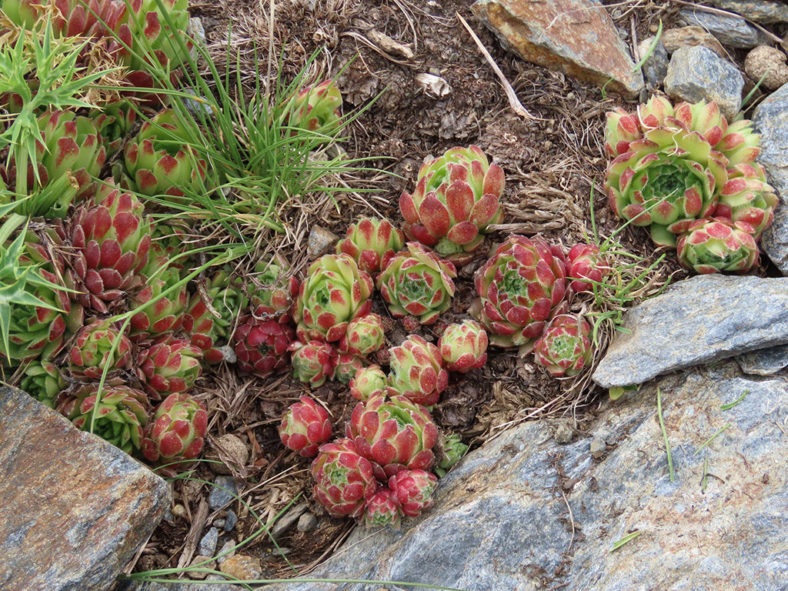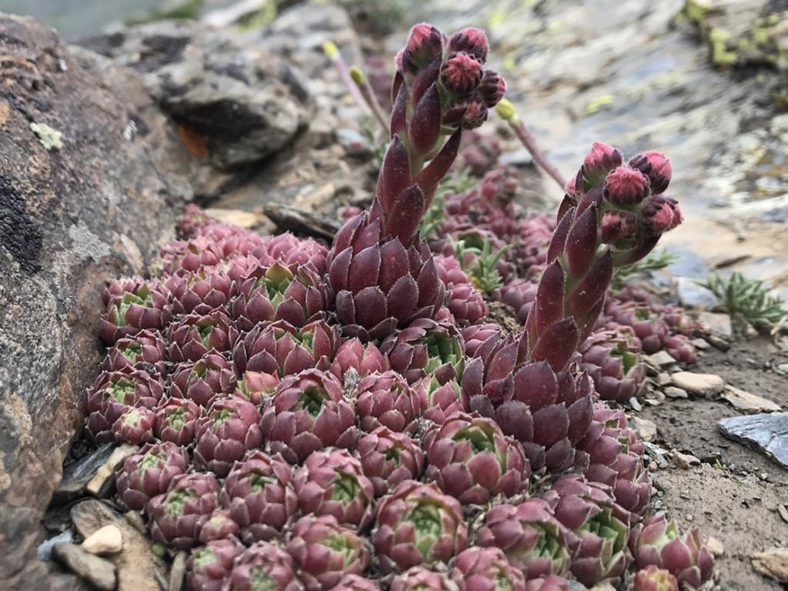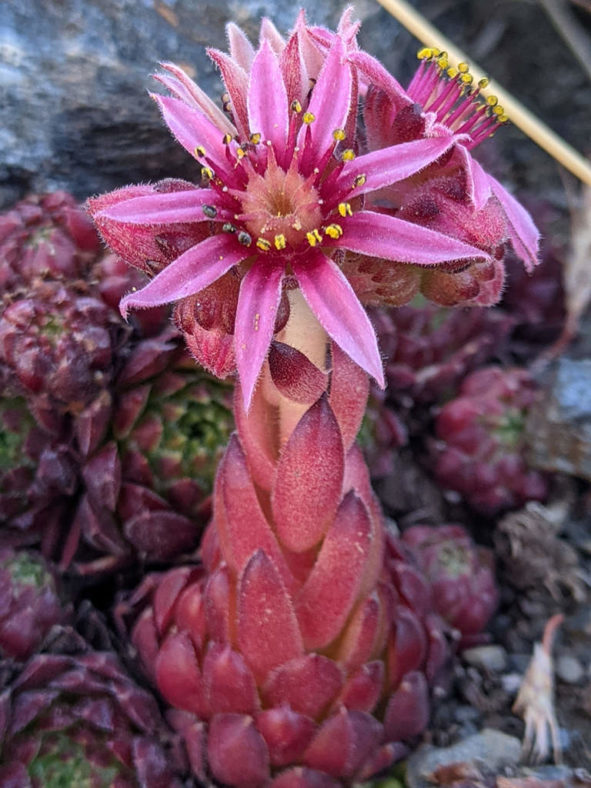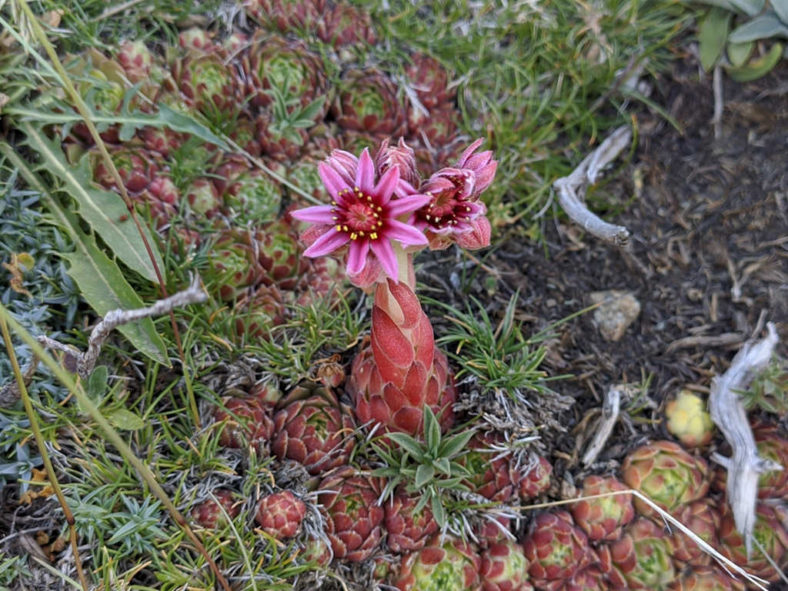Scientific Name
Sempervivum minutum (Kunze ex Willk.) Nyman ex Pau
Synonym(s)
Sempervivum minutum f. glabrescens, Sempervivum nevadense, Sempervivum nevadense var. hirtella, Sempervivum tectorum subsp. lainzii, Sempervivum tectorum var. minutum, Sempervivum vicentei subsp. lainzii
Scientific Classification
Family: Crassulaceae
Subfamily: Sedoideae
Tribe: Sedeae
Subtribe: Sedinae
Genus: Sempervivum
Etymology
The specific epithet "minutum (min-YOO-tum)" means "very small, little, minute" and refers to the small rosettes of this species.
Origin
Sempervivum minutum is endemic to the mountains of the Sierra Nevada, southern Spain.
Description
Sempervivum minutum, formerly known as Sempervivum nevadense, is a small succulent that forms compact rosettes of fleshy, apple-green leaves with stout, often deflexed cilia on the edges. The outer leaves are scarlet-colored in winter and pinkish-bronze at the flowering time. The rosettes can grow up to 1.2 inches (3 cm) in diameter and produce offsets at the end of short stolons. The leaves are obovate, ending in an abruptly tapering point, and can measure up to 0.6 inches (1.8 cm) long and 0.3 inches (0.7 cm) wide.
The flowers are star-shaped, reddish-pink, occasionally with a darker red band, and can reach up to 0.9 inches (2.3 cm) in diameter. They appear in summer in a compact cluster at the end of a stout stalk clad with many overlapping leaves. The flower stalk can grow up to 4.8 inches (12 cm) tall.

How to Grow and Care for Sempervivum minutum
Light: This succulent prefers a spot in full sun but will appreciate some afternoon shade if planted in hot climates. It is unsuitable for indoor growing because it usually does not get as much sunlight as it likes.
Soil: To ensure S. minutum thrives, it needs a well-draining soil mix with 25 to 50 % sand, gravel, and perlite or pumice. If planted in a pot, a commercial soil mix for succulents should be sufficient to keep the roots dry and happy.
Temperature: S. minutum is perfect for cold climates, as it can handle temperatures down to -30 °F (-34.4 °C). It is also heat-tolerant but prefers average summer temperatures between 65 and 75 °F (18 and 24 °C). USDA Plant Hardiness Zones 4a to 9b, -30 to 30 °F (-34.4 to -1.1 °C).
Watering: Water thoroughly during the spring and summer and allow the soil to dry out between watering. Reduce watering in the fall when S. minutum enters dormancy. Mature rosettes planted in the ground can overwinter without receiving extra water from you. Plants in containers may need a little water to make it through winter. Never let water sit in the rosette or underneath the pot.
Fertilizing: This Sempervivum grows well without feeding but benefits from a controlled-release fertilizer at the beginning of the growing season. It can also be fertilized once a week with a diluted liquid solution.
Repotting: Plants in containers will benefit from being repotted. Repot as needed, preferably during the spring.
Propagation: S. minutum can be grown by dividing the offsets produced each season. The best time to divide the offsets is spring or summer, once they are at least a quarter of the mother rosette's size.
Learn more at How to Grow and Care for Sempervivum.
Toxicity of Sempervivum minutum
Sempervivums are not known to contain any toxic compounds. Therefore, S. minutum is considered a safe plant to grow around pets and children.
Links
- Back to genus Sempervivum
- Succupedia: Browse succulents by Scientific Name, Common Name, Genus, Family, USDA Hardiness Zone, Origin, or cacti by Genus
Photo Gallery
Click on a photo to see a larger version.


